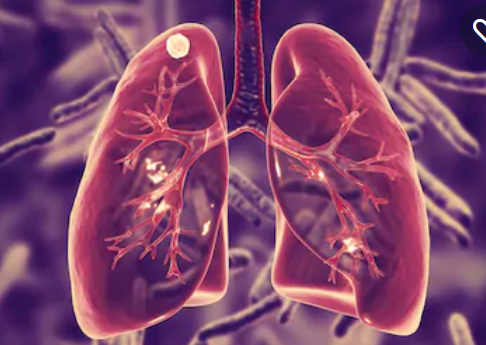 Tuberculosis is a chronic respiratory infectious disease caused by Mycobacterium tuberculosis. The lesions mainly occur in lung tissue, trachea, bronchus as well as pleura, and pulmonary tuberculosis infection is the most common. Tuberculosis can be divided into three categories: latent infection of Mycobacterium tuberculosis, active tuberculosis and inactive tuberculosis. Human infection with Mycobacterium tuberculosis is the basic cause of tuberculosis. Healthy people may be infected when they inhale droplets of Mycobacterium tuberculosis, and there is a possibility of further developing into pulmonary tuberculosis. Whether the onset of disease also depends on factors such as human immunity, the number and virulence of Mycobacterium tuberculosis. If the infected person can be diagnosed in time and given reasonable treatment, most of them will get clinical recovery.
Tuberculosis is a chronic respiratory infectious disease caused by Mycobacterium tuberculosis. The lesions mainly occur in lung tissue, trachea, bronchus as well as pleura, and pulmonary tuberculosis infection is the most common. Tuberculosis can be divided into three categories: latent infection of Mycobacterium tuberculosis, active tuberculosis and inactive tuberculosis. Human infection with Mycobacterium tuberculosis is the basic cause of tuberculosis. Healthy people may be infected when they inhale droplets of Mycobacterium tuberculosis, and there is a possibility of further developing into pulmonary tuberculosis. Whether the onset of disease also depends on factors such as human immunity, the number and virulence of Mycobacterium tuberculosis. If the infected person can be diagnosed in time and given reasonable treatment, most of them will get clinical recovery.
Tuberculosis can be diagnosed by:
Creative Biogene's tuberculosis detection kits are mostly based on immunochromatography or real-time PCR to detect and identify the pathogen Mycobacterium tuberculosis. The biochemical, immunological and molecular biological properties of Mycobacterium tuberculosis have allowed people to identify several antigens, which will help to improve the diagnostic methods to distinguish Mycobacterium tuberculosis complexes from tuberculosis branches other than Mycobacterium tuberculosis Bacillus. Our products have fast detection speed, high sensitivity, reproducibility and accuracy.
Creative Biogene focuses on the field of diagnostic reagents for tuberculosis. We are committed to providing the best products to accelerate the realization of customers' research goals.
Please contact us for more details.
Reference
| Cat# | Product Name | Product Type | Inquiry |
|---|---|---|---|
| C0377T | Rapid tuberculosis test | Rapid test | Inquiry |
| C0378T | Rapid tuberculosis test | Rapid test | Inquiry |
| C0379T | Tuberculosis rapid diagnostic test | Rapid test | Inquiry |
| C0380T | Rapid tuberculosis test | Rapid test | Inquiry |
| C0381T | Rapid tuberculosis test | Rapid test | Inquiry |
| C0382T | Rapid tuberculosis test | Rapid test | Inquiry |
| C0383T | Identification analysis test kit | Test kit | Inquiry |
| C0384T | Tuberculosis test kit | Test kit | Inquiry |
| C0385T | Tuberculosis test kit | Test kit | Inquiry |
| C0386T | Tuberculosis test kit | Test kit | Inquiry |
| C0387T | Tuberculosis test kit | Test kit | Inquiry |
| C0388T | MTB real-time PCR kit | Test kit | Inquiry |
| C0389T | MTB Diff real-time PCR kit | Test kit | Inquiry |
| C0390T | MTB MDR resistance real-time PCR kit | Test kit | Inquiry |
| C0391T | Mycobacterium tuberculosis IgG ELISA | Test kit | Inquiry |
| C0392T | Mycobacterium tuberculosis IgM ELISA | Test kit | Inquiry |
| C0393T | TB IgG/IgM Combo Rapid Test | Test kit | Inquiry |
Copyright © 2026 Creative Biogene. All rights reserved.